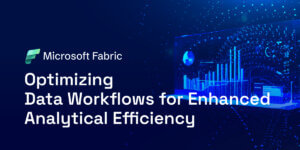What is Cloud Computing?
Cloud computing refers to the provision of computing services such as servers, storage, databases, networking, software, analytics, and intelligence over the Internet (the cloud). This allows for flexible resources, faster innovation, and economies of scale. Users can access these services on-demand without owning the underlying infrastructure, paying only for what they use.
Cloud Computing vs Traditional Computing
1. Ownership and Management
Traditional computing involves owning physical hardware onsite –servers, storage devices, networking equipment, etc.- which also needs ongoing maintenance after purchase, and large upfront capital expenditures.
On the contrary, all resources in cloud computing are owned and looked after by respective owners, i.e., “Cloud Service Providers.” Also users connect these items via web browsers over Internet connections, paying per use or through subscriptions, thereby reducing huge initial investments.
2. Scalability
In most cases, traditional IT infrastructures require substantial amount of effort and money when scaled up (add more servers, storage etc.) or down. This may cause over-provisioning, wasting resources, or under provisioning.
Cloud computing provides flexible scaling options that allow businesses to scale their resource usage up and down rapidly based on immediate requirements. This helps businesses optimize costs and improve operational efficiency.
3. Accessibility
Traditional computing often require employees to be onsite or use specific network configurations to access resources, limiting flexibility.
With cloud computing, any resource can be accessed from anywhere if one has an internet connection. Thus, remote working, which promotes collaboration among different people even outside the organization’s premises, is enabled.
4. Maintenance
Maintaining traditional IT infrastructure necessitates a team solely dedicated to handling updates, security patches, and hardware failures, among other issues.
On the other hand, these tasks are handled mainly by service providers in cloud computing environments, ensuring that everything is kept updated and secured. Thus, allowing companies to concentrate more on their core activities rather than spending much time fixing things that should have been prevented earlier.
5. Cost Structure
The capital expenditure model characterizes traditional computing that uses traditional IT infrastructures, where organizations need to buy both hardware and software. This is followed by continuous operational expenses such as staff salaries for maintenance purposes, cooling power bills, etc.
In most cloud computing platforms, users pay for what they use. This can come in the form of flexible pay-as-you-go pricing models, reserved instance plans, and other plans. These make it easy to manage finances predictably since you only spend when necessary and base your budget on monthly subscriptions without necessarily worrying about upfront investments.
Types of Cloud Computing
Cloud computing is often divided into different types according to the deployment and service models used. Knowing these types will help businesses decide on what cloud solution they need.
1. Public Clouds
Public clouds are run by third-party providers who provide computing resources such as servers and storage over the Internet. Examples are Amazon Web Services (AWS), Google Cloud Platform (GCP), Microsoft Azure, etc.
Pros: Cheap, easy scaling, zero maintenance costs.
Сons: Infrastructure control is limited; possible security issues and compliance problems.
2. Private Clouds
Private clouds are used only by one organization. They can be situated at the company’s on-site data center or hosted by a third-party provider.
Pros: More control over data and infrastructure, better security and compliance.
Cons: Expensive because it requires dedicated hardware & maintenance, not very scalable like public clouds.
3. Hybrid Clouds
Hybrid clouds combine public and private clouds to share information or apps. This configuration gives businesses more flexibility in deploying their workloads.
Pros: Cost-effective balance between cost efficiency and control; enables optimized workload management.
Cons: Many potentialities for securing various cloud environments; complex to manage multiple cloud environments
Cloud Computing Service Models
Infrastructure as a Service (IaaS)
The internet offers virtualized computing resources. Such services encompass virtual machines, networking, and storage.
Examples: Amazon EC2, Google Compute Engine, Microsoft Azure Virtual Machines.
Use Cases: Businesses that require scalable and flexible computing resources find them suitable. It is also widely used for website hosting, big data analysis among other things such as disaster recovery.
Benefits:
- Scalability: Resources can be easily scaled up or down according to demand.
- Cost-Effectiveness: Pay-as-you-go pricing models minimize capital expenditure.
- Flexibility: Users can customize based on specific requirements because they have control over the virtualized infrastructure itself.
Platform as a Service (PaaS)
PaaS avails hardware as well as software tools for developers over the internet. PaaS platforms provide frameworks which allow programmers to build and deploy applications easily.
Examples: Google App Engine, Microsoft Azure App Service, Heroku.
Use Cases: Developers who want to build, test, and deploy applications without having to worry about underlying infrastructure should consider this option. Commonly used in building mobile and web applications.
Benefits:
- Development Speed: Pre-configured environments speed up the development process.
- Cost Savings: Reduces infrastructure management needs which lowers operational costs.
- Focus on Coding: Allows developers to focus on writing code without worrying about infrastructure maintenance.
- Scalability: Applications can automatically be scaled based on demand.
Software as a Service (SaaS)
SaaS provides software applications over the internet on subscription basis. These applications are hosted by service providers who manage them too.
Examples: Google Workspace (formerly G Suite), Microsoft Office 365, Salesforce.
Use Cases: Covers wide range of uses including Email/Collaboration tools /CRM etc., particularly suitable for enterprises requiring frequent changes or updates without installation or maintenance efforts on their part.
Benefits:
- Accessibility: Can be accessed from anywhere with an internet connection.
- Cost Efficiency: Subscription-based pricing eliminates large upfront costs.
- Maintenance-Free: Updates, maintenance & security handled by service providers.
- Quick Implementation: Rapid deployment with minimal setup requirements.
Applications for Cloud Computing
Cloud computing has changed how we store and use data as individuals and businesses. Some of the most common applications are listed below.
1. Data Storage and Backup
Cloud storage is a reliable and scalable solution for personal and business use. Dropbox, Google Drive, or Microsoft OneDrive are some examples of popular services that can securely store files and documents that can be accessed from anywhere with an internet connection. This flexibility ensures protection against hardware failures or other unforeseen events that might cause data loss.
2. Application Development and Hosting
Cloud platforms provide development, testing, and hosting environments. Amazon Web Services (AWS), Google Cloud Platform (GCP), or Microsoft Azure offer various tools and services for developers such as AWS Elastic Beanstalk or Google App Engine so that they don’t have to worry about underlying infrastructure when deploying applications; these platforms support multiple programming languages & frameworks making building scalable applications faster & easier.
3. Big Data Analytics
With the help of cloud-based analytics tools, companies can process large amounts of information quickly. For example: AWS Redshift, Google BigQuery or Microsoft Azure Synapse Analytics provide scalable solutions for big data analytics where powerful querying capabilities enable quick insights generation from company’s own data sets; this means organizations can perform complex analyses on their own without having to buy expensive hardware & software needed otherwise.
4. Artificial Intelligence and Machine Learning
Cloud computing makes artificial intelligence (AI) along with machine learning (ML) more accessible due to the scalability factor. There is also cost-effectiveness involved with such platforms explicitly designed to facilitate the usage of these technologies at higher levels than ever before. It is achievable by any organization, like small and medium-sized enterprises (SMEs). IBM Watson offers pre-built models, while businesses could use Google AI or AWS Machine Learning.
Businesses look forward to developing their custom ML models depending upon specific needs, etc., including anything ranging from NLP to image recognition systems. Further predictive analytics or automated decision-making can also be done through cloud AI services. This enables organizations to tap into advanced capabilities without requiring specialized hardware coupled with extensive knowledge of their use.
Cloud Computing Security
Security in cloud computing is a significant issue, ranging from breaches and loss of sensitive data to threats by insiders and insecure interfaces. The shared nature of cloud services on-demand can make it difficult to ensure data privacy and regulatory compliance, thereby increasing unauthorized access risk and information leaks. These concerns call for strong measures to safeguard the confidentiality and integrity of data.
Key Security Measures
- Encryption: A process to convert raw information into a non-readable form unless decrypted by an authorized party. This helps protect data at rest or while in transit.
- Multi-Factor Authentication (MFA): It adds one more layer by requiring multiple verifications such as password plus code sent via mobile device before giving access.
- Regular Security Audits: They are done periodically to identify weaknesses and ensure adherence to safety policies.
- Access Controls: Strict rules should be established, allowing only authorized persons to use critical systems or access sensitive information.
Future Developments in Cloud Computing
Edge Computing: The idea of edge computing refers to bringing data storage and calculations closer to where they are required. This reduces latency and increases response time, which is essential for real-time processing applications.
Serverless Computing: Serverless computing enables developers to build and run applications without managing infrastructure. It automatically scales applications based on demand and charges only for the actual usage, thus improving efficiency and cost-effectiveness.
Scope for Growth
The rapid growth of cloud services will continue as AI, machine learning, and IoT applications gain more adoption. Clouds will also be able to incorporate advanced analytics and automation, making it easier for companies to control their environments while optimizing them simultaneously. Moreover, hybrid/multi-cloud strategies will become widespread because organizations want flexibility when different cloud platforms are used, thus enhancing resilience. With such developments, cloud computing will drive innovation across all sectors since it relies heavily on operational efficiency benefits.
Conclusion
Cloud computing has given companies unprecedented ability to adapt at will while keeping costs low. This means knowing everything about it, from different deployment models to all the benefits and uses they offer. It is how organizations can make the most of cloud computing.
The future integration, efficiency gains, and capabilities promised by cloud computing are even more significant, with such developments as edge computing continuing to evolve. Therefore, businesses should keep abreast with these changes to remain pioneers of technology, thereby driving innovations geared toward operational excellence.
Share this glossary


